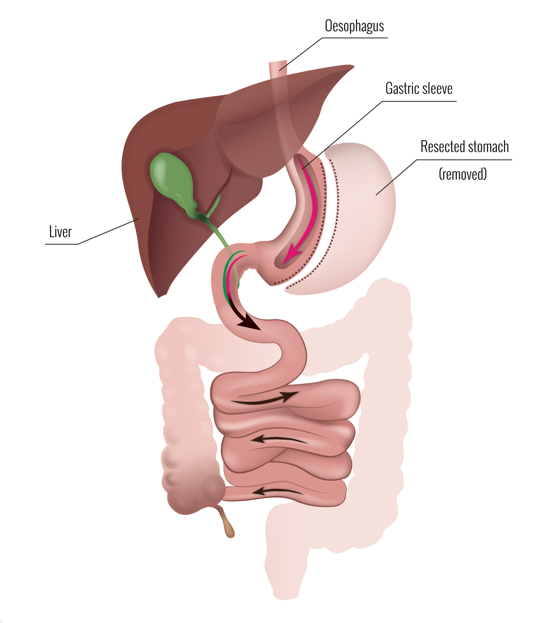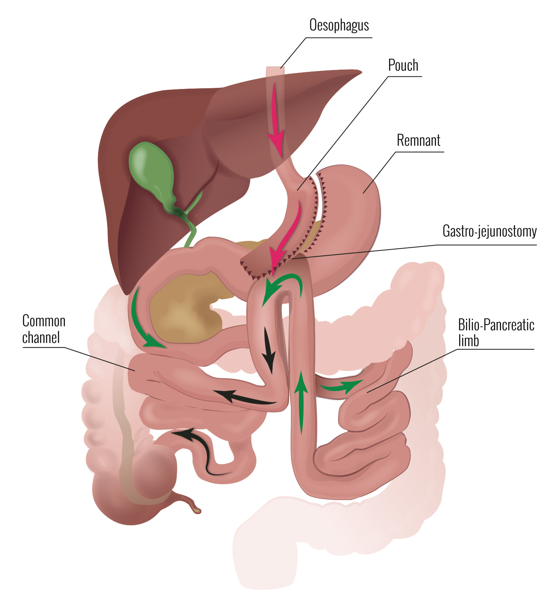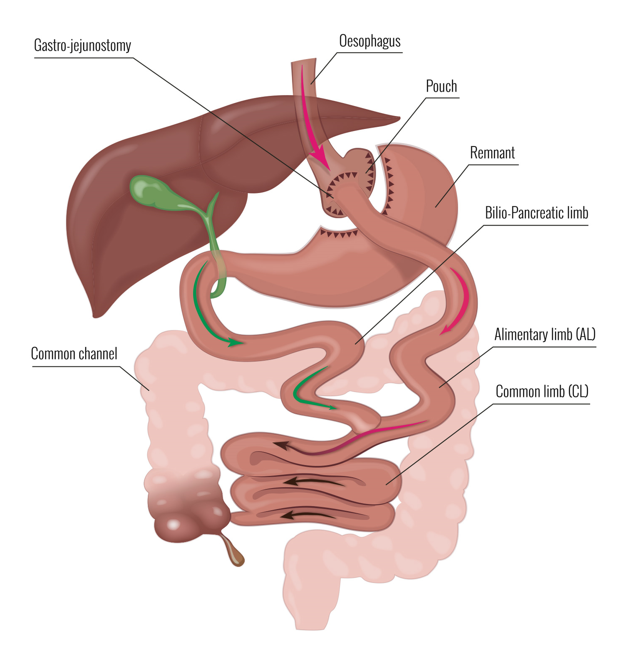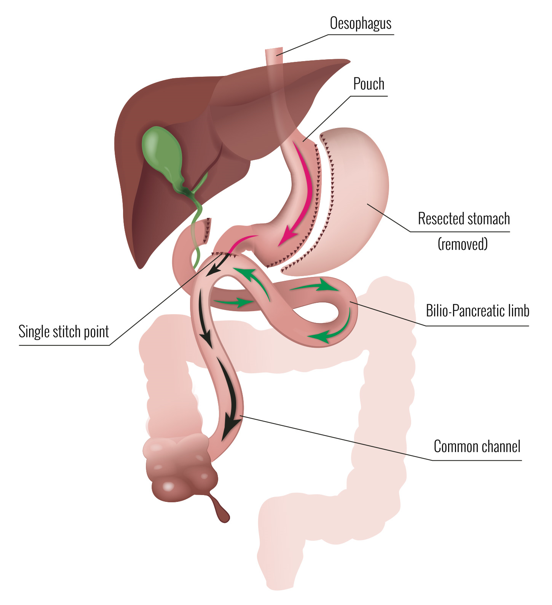Dr Whiting and his multidisciplinary team are dedicated to providing comprehensive support for all patients both pre- and post-surgery.
Bariatric & Metabolic surgery is the name given to surgical weight loss procedures. Bariatric surgery elicits a metabolic and hormonal response and in conjunction with dietary and lifestyle changes, aids in significant weight loss. Consequently, patients undergoing bariatric surgery can experience an improvement and or resolution of obesity related co-morbidites, improvement in overall health, quality of life and mental health.
Patients may also undergo bariatric surgery to improve and in some cases resolve obesity-related co-morbidities such as:

The sleeve gastrectomy involves removing approximately 70 per cent of your stomach. The result is a small, tubular stomach that can hold between 150-200mls of volume. This laparoscopic surgery alters the production of circulating gut hormone (Ghrelin) that control hunger and satiety. This sleeve gastrectomy is the most commonly performed bariatric procedure in Australia.

A mini gastric bypass involves keyhole surgery which reduces the size of your stomach by bypassing a portion of the stomach. Reducing the size of your stomach will make you feel fuller sooner. After eating, food will pass through the stomach pouch straight to the small intestine, bypassing the lower part of the stomach and the upper part of the small intestine. Changed hormones improve blood sugar control, reduce hunger, and boost fullness, enhancing metabolic health and aiding weight management.

Roux-en-Y Gastric bypass, otherwise known as RY gastric bypass, involves forming a small pouch from your stomach which is then disconnected from the remaining stomach. Following this, a section of the small bowel is disconnected and joined (otherwise known as anastomosis) to the pouch. A second anastomosis is made to reconnect the small bowel along the small intestine. This surgery alters a patient’s metabolic response and limits the amount of food that can be consumed.

A SADI surgery is a variant of the duodenal switch. Using keyhole surgery, a narrow stomach sleeve is created, reducing the size of the stomach. The first part of the intestine is divided, and the remaining portion of the stomach is connected directly to a section of the small intestine, allowing food to bypass 2/3 of the small intestine where calories and nutrients are typically absorbed.
Revision bariatric surgery may be necessary when a patient who has previously undergone bariatric procedure requires a conversion to a different operation. Factors leading to revision surgery vary, but may include reflux or weight regain, however each case is carefully considered, and a thorough assessment is completed before additional surgical measures are recommended.
In addition to surgical weight loss procedures, Dr Scott Whiting and his multi-disciplinary team are also one of the few clinics in Australia to offer the Allurion gastric weight loss balloon. It is a non-surgical procedure designed to reset your eating habits and kickstart your weight loss journey.

We know it can feel overwhelming choosing the right weight loss option for your circumstances, and not all procedures will work for everyone. That’s why we’re here to help.
You can rely on Dr Whiting and his team to support you through any bariatric surgery procedure or non-surgical weight loss measure. Using world-class research and training to inform his procedures, you will be well cared for by our team along your weight loss journey.
Contact us to arrange a consultation with Dr Whiting to discuss your options and see which bariatric surgery would work best for you.
We acknowledge the Bindal and the Wulgurukaba peoples, the traditional custodians on the land in which we are gathered today. We pay our respects to elders, past, present and emerging. We acknowledge that sovereignty was never ceded. We acknowledge that we benefit from living and working on these lands.
This land is Aboriginal land, always was, is, and always will be.
Are you considering weightloss surgery?
If your BMI is between 30-35 without obesity-related health conditions, Dr Whiting will carefully determine your eligibility for surgical weight-loss interventions.